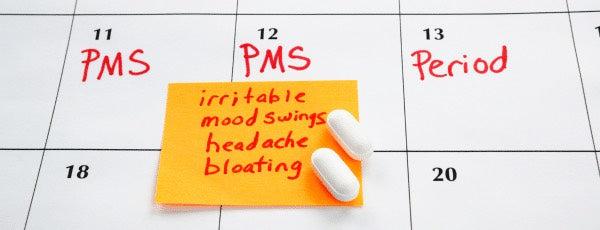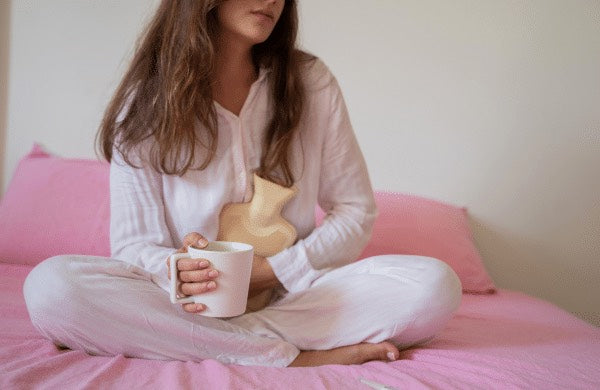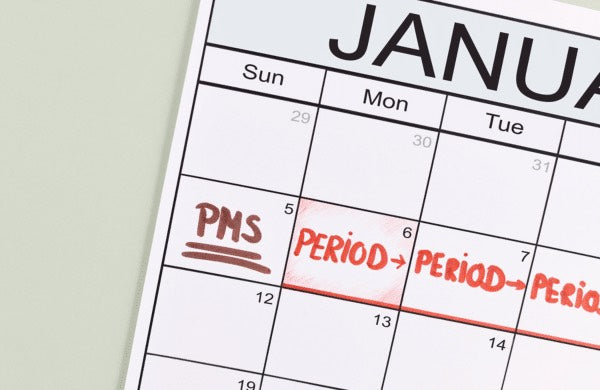In the run-up to and during menstruation, your body screams for peace and quiet. You prefer to retreat to a comfortable and quiet place with a blanket, something tasty and a cry movie. We all know it: that period of the month when you don't feel quite like yourself. You suffer from mood swings, fatigue and sometimes even physical complaints.
If this comes back quite intensely every month, this could be a sign of PMS, or Premenstrual Syndrome. This is often discovered late by a GP, or sometimes an incorrect diagnosis is made, with all the consequences that entails. That is why we would like to explain to you in the article below what PMS is, so that you can be alert to it yourself and raise it with your doctor. Doing! Because PMS every month is no fun.
Premenstrual syndrome: anyone who has their period can get it
Premenstrual syndrome (PMS) recurs every month and is a condition that affects women's physical and emotional health. With PMS there are a number of symptoms that occur in the days or weeks before menstruation, after ovulation (see later in this article). The symptoms can occur from about two weeks before menstruation and return almost every month.
PMS is a condition that is common in women and can seriously affect the daily activities and lives of some women. All girls and women who have their periods can get PMS. PMS often occurs after having children. It mainly occurs in women between the ages of 35 and 45. About 5% of women between the ages of 15 and 45 suffer from PMS. The good news is that after the menopause the complaints disappear again. But of course you don't have to wait for that.
Progesterone plays an important role in PMS. Women with PMS are more sensitive to this hormone. The increase in progesterone during this phase can cause some of the physical complaints in PMS. It is mainly the brains of these women that are more sensitive to the hormone and to the substances that resemble it.

PCOS, PMDD and PMS: what's the difference?
PCOS (Polycystic Ovary Syndrome), PMDD (Premenstrual Dysphoric Disorder) and PMS are all kinds of abbreviations (are you still keeping track?!) that all have to do with the menstrual cycle and hormonal changes in the body. They are different conditions with different symptoms and causes. The symptoms can vary widely for women. But what's the difference?
PCOS is a hormonal disorder characterized by an irregular menstrual cycle, ovarian cysts, increased androgen production and insulin resistance. The symptoms of PCOS include an irregular or absent menstrual cycle, excessive hair growth, acne and weight gain.
PMDD is a severe form of PMS and is characterized by mood swings, depression, anxiety, irritability and other emotional and physical symptoms that may occur the week before menstruation. PMDD can negatively impact women's daily lives.
How can you recognize PMS every month?
The symptoms of PMS can vary greatly from person to person, but may include:
- Tender or swollen breasts
- Mood swings and irritability, anxiety or depression
- Headache or migraine
- Bloating and weight gain
- Retention of moisture (for example in the feet and hands)
- Fatigue and sleep problems
- Changes in appetite or cravings
- Cramps
- Acne

You are worth investing in your relationship with yourself
You feel gloomy and your body wants rest. But your upbringing and society have taught you something different. There you will be taught to take your responsibilities and fulfill your obligations.
Another taboo. How do you deal with this? How do you indicate your limits? Do you discuss with your manager, your teacher or friends that you need some time for yourself? Even though people around you may not understand this. You are worth investing in the relationship with yourself, so that you can be a better self at other times!
Diagnosis and treatment of PMS
Unfortunately, there is no specific test (yet) that tells you whether you have PMS. It cannot therefore be determined by a blood test. If you have PMS, you do not have fewer, more or different hormones in your blood compared to women without PMS, it is mainly the brain that responds differently to this. A hormone test is therefore pointless. As a result, it often takes too long for women to discover that they have this condition and they sometimes take medication unnecessarily.
It is good to keep a diary of your symptoms to determine a pattern. Take this with you to your doctor. There are several treatment options for PMS. Which one is suitable depends on your situation and how bad your symptoms are. Discuss which treatment option is best for you with your doctor. The possibilities here may be:
- Make changes to your lifestyle. Regular exercise and moderating caffeine and alcohol consumption can help reduce symptoms.
- Medication, such as hormonal contraception, a drospirenone pill, antidepressants and LHRH agonists may be prescribed to reduce symptoms. LHRH agonists are medications that inhibit the functioning of the ovaries, causing your body to stop producing progesterone and estrogen. You then temporarily find yourself in a situation that resembles menopause, with sometimes possible menopause complaints. Antidepressants ensure that your brain cells become less sensitive to hormone fluctuations. Research has shown that women with PMS who take antidepressants often feel better. This may cause side effects such as dizziness, insomnia, fatigue, headache, nausea, diarrhea, orgasm problems and less desire for sex.
- The use of homeopathic and natural medicines, vitamin supplements and herbs (such as evening primrose oil or maca powder) can have a supportive effect. Vitamin B6, vitamins C and E, magnesium and zinc may also help relieve PMS symptoms.

You can do this yourself to reduce PMS symptoms
In addition to medical treatments, there are a number of things you can try to manage PMS symptoms, improve your daily functioning and rebalance your hormones, for example:
- Eat healthy and balanced. Go for (organic) fruit and vegetables, and have a handful of nuts or dried fruit as a snack.
- Drink enough water.
- Make sure you get enough sleep and rest.
- Avoid caffeine, alcohol, fat, salt and sharp spices. Be sparing with dairy and sugars.
- Stay active and exercise regularly. For example, go for a nice bike ride or walk.
- Reduce stress. Try meditation or yoga, or read a book.
- Talk about it with your doctor or people around you.
April is PMS awareness month/PMDD Awareness Month
The month of April has been declared “PMS/PMDD Awareness Month” to draw attention to premenstrual syndrome and its impact on people's daily lives.

During this month, various activities are organized to inform people about PMS, its symptoms and treatments. Attention is also paid to the importance of recognizing PMS as a serious health problem and providing support to the women who suffer from it.
PMS is not a life-threatening condition, but it can greatly affect the quality of life of people who suffer from it. By raising awareness about PMS, health organizations and professionals hope to help people understand that they are not alone in their struggle and that there are treatment options.
In conclusion, PMS is a monthly recurring condition that can have a significant impact on women's lives. Recognizing the symptoms and discussing them with a doctor is essential for proper diagnosis and treatment. Although there is no specific test for PMS, there are several treatment options ranging from lifestyle adjustments to medications. By raising awareness and providing support, we aim to help women overcome the challenges of PMS and experience a better quality of life. Would you like more information about PMS? Then check with your home doctor .







